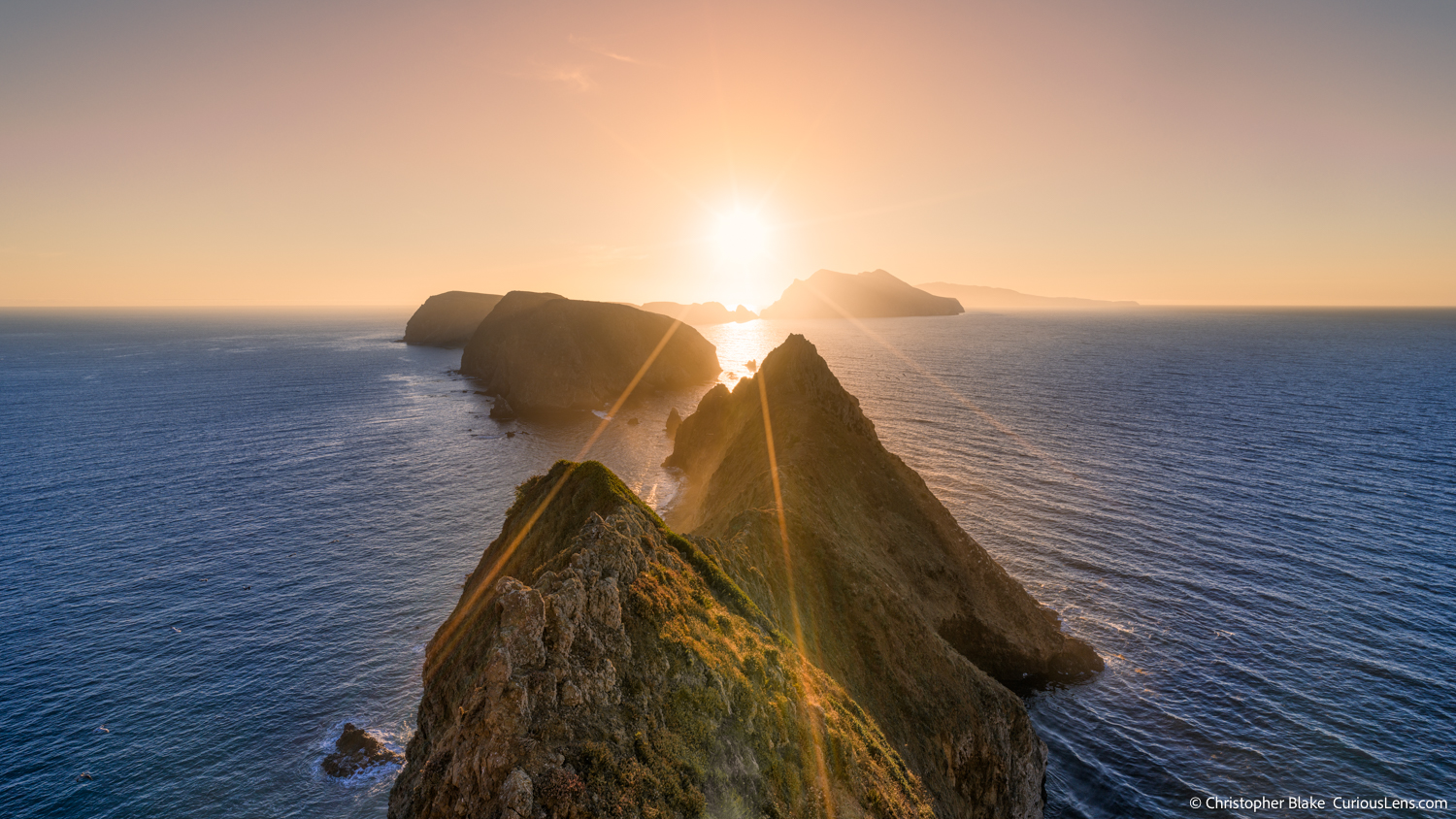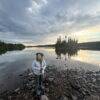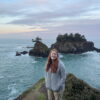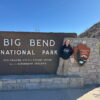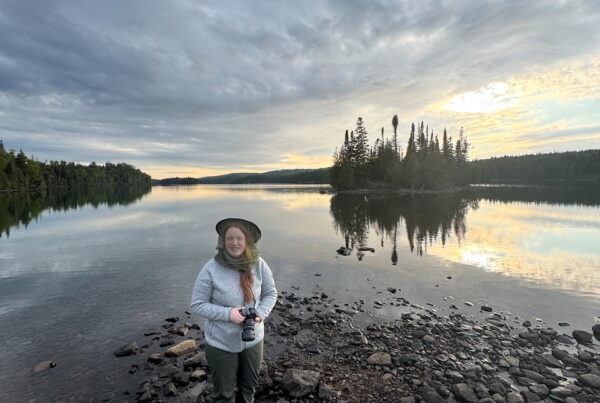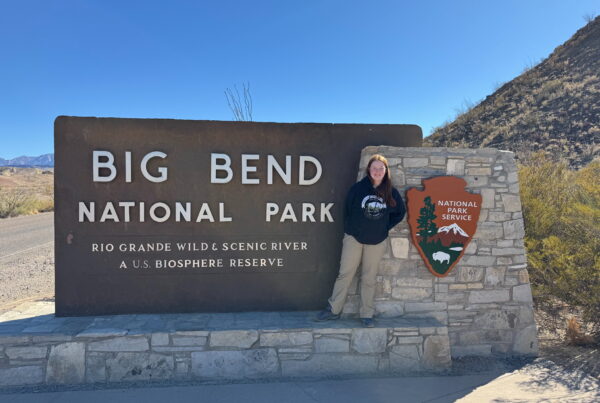In October of 2024, Cameron and I ventured back to California to explore our 54th National Park. The Channel Islands National Park marked the last of California’s eight national parks that we hadn’t yet visited. Unique for its composition of a chain of islands, this park presented a distinctive planning challenge.
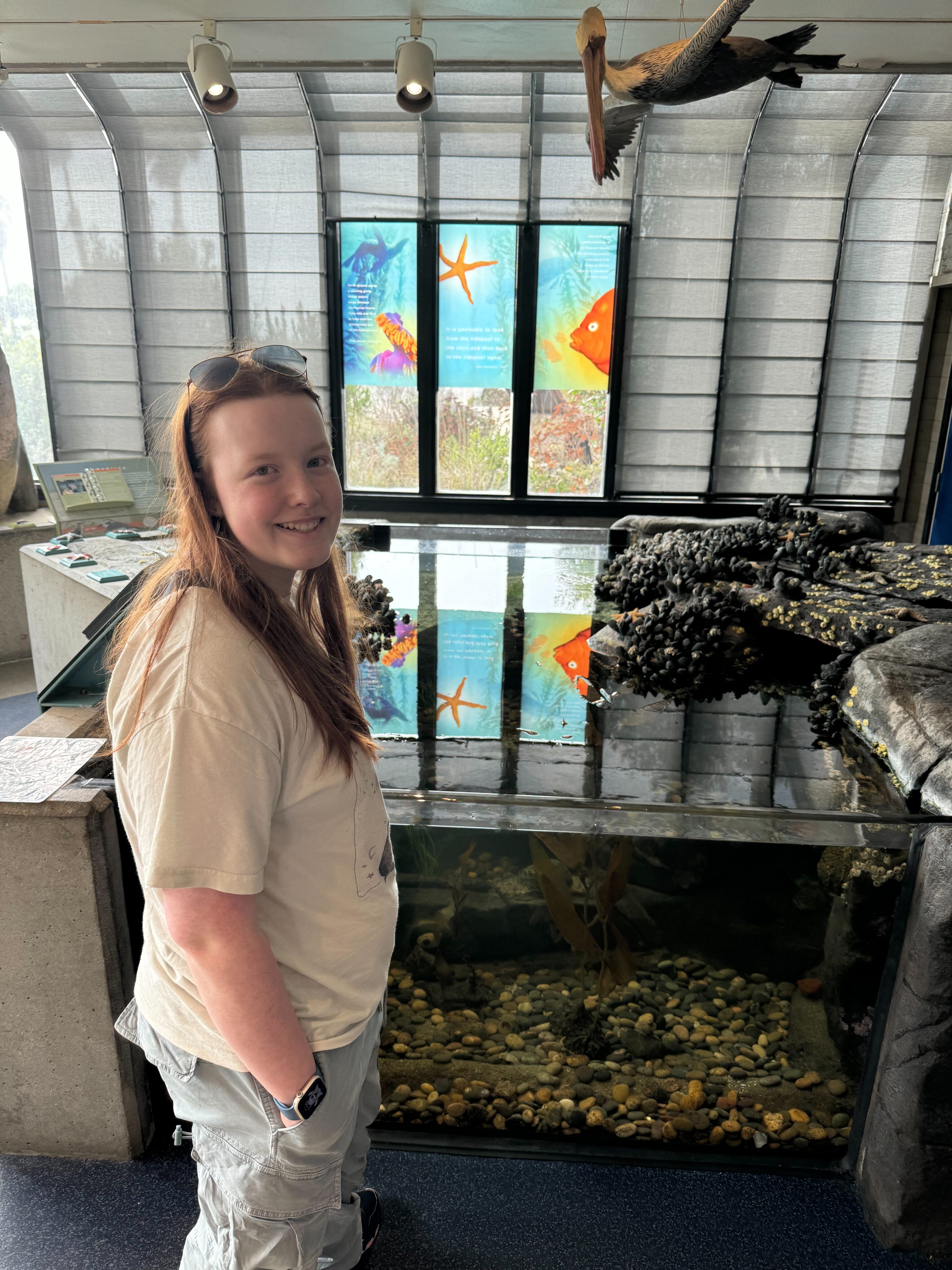

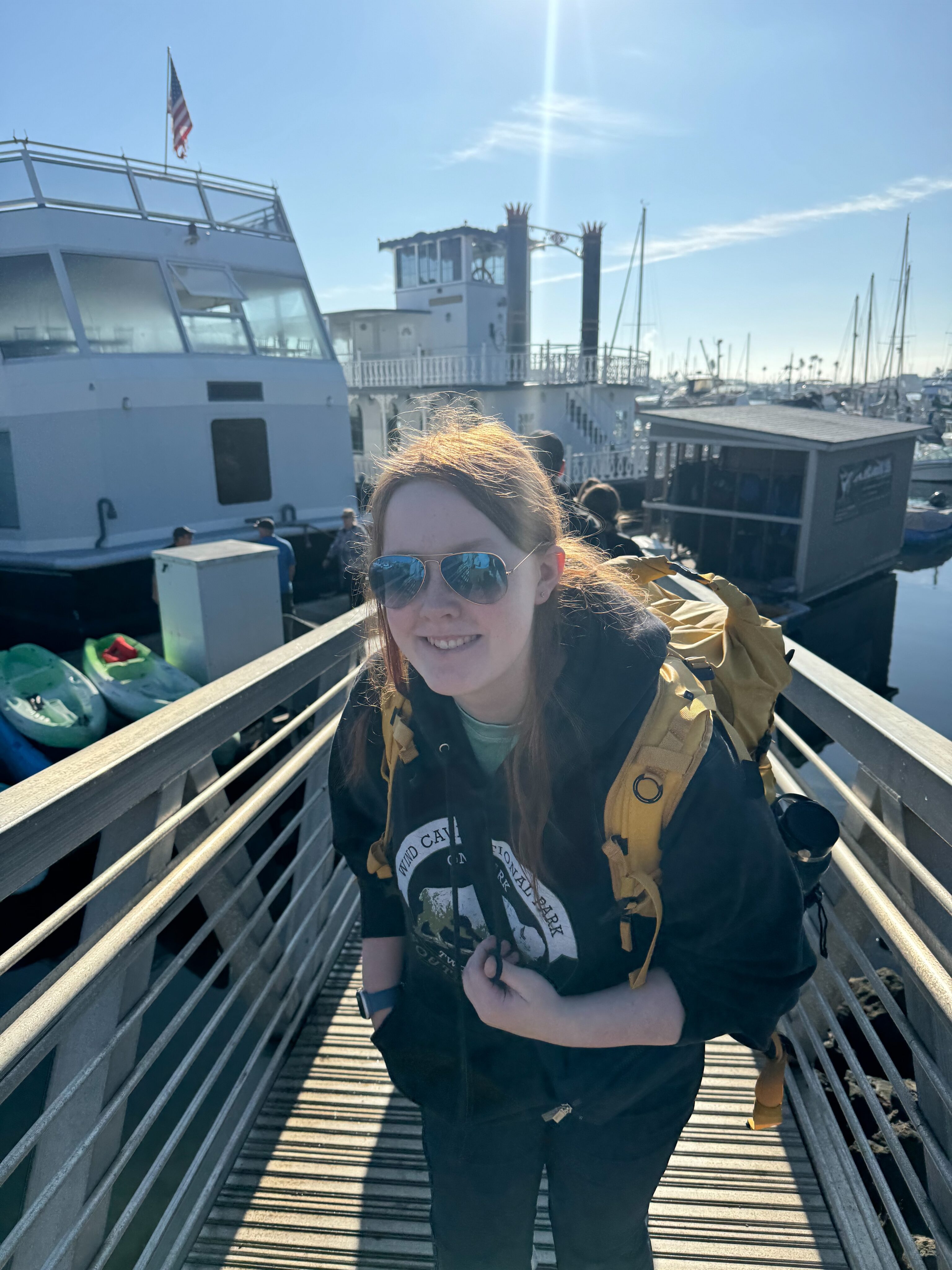
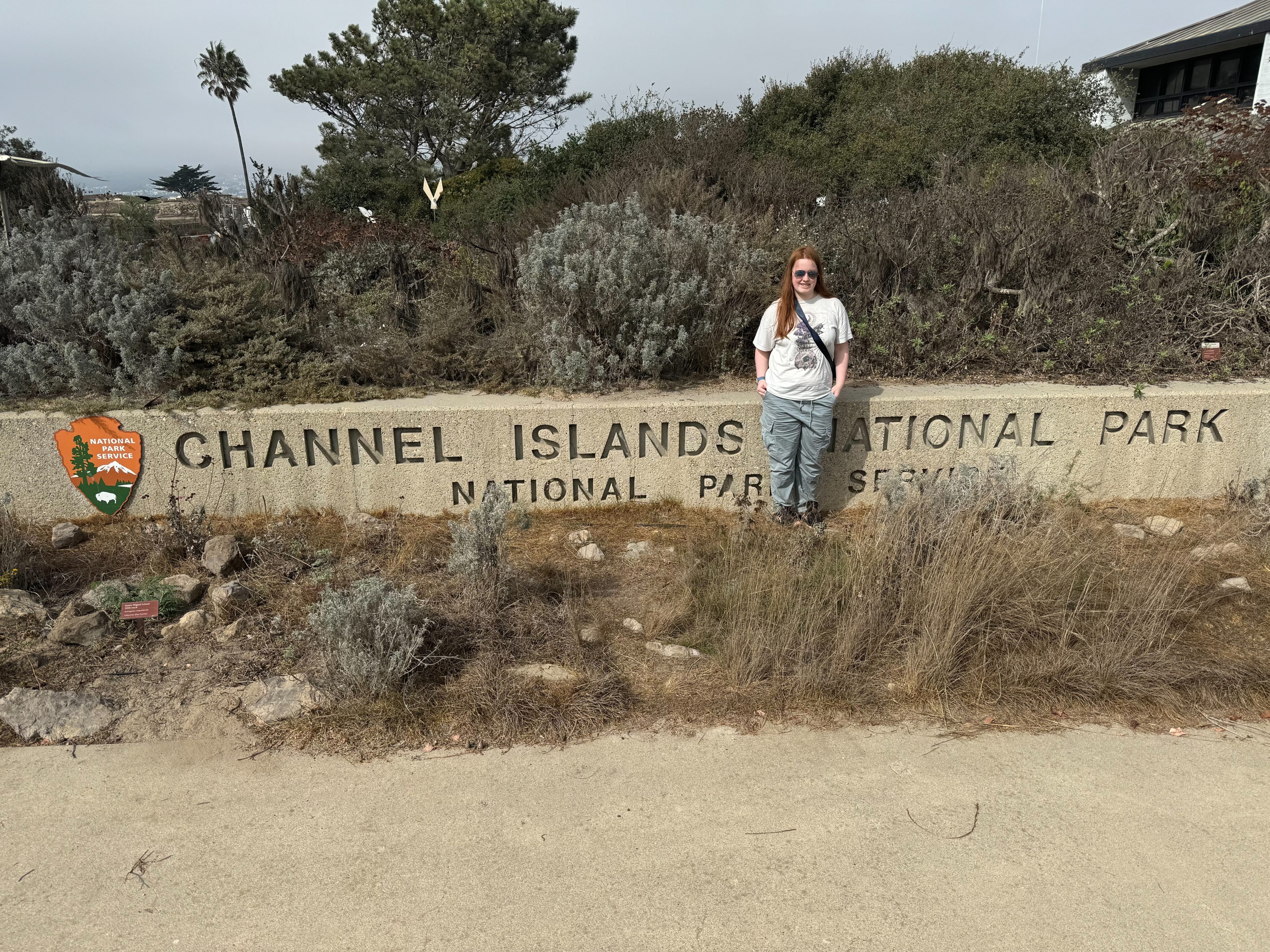
Encompassing five islands off the California coast north of Los Angeles, Channel Islands National Park sprawls over almost 250,000 acres. Santa Cruz Island, the largest of the five, is a biodiverse haven. Its varied landscapes—from rugged cliffs and deep canyons to lush chaparral—offer a rich tapestry of flora and fauna. The island is known for its endemic species, like the island fox, and historical remnants of ranching days. Other islands like Anacapa, though smaller, play crucial roles in marine and avian ecosystems, hosting significant seabird colonies and vibrant kelp forests ideal for snorkeling and diving.
Our adventure was centered on Anacapa Island, the closest to the mainland, with just over an hour’s boat ride separating us from the mainland. Composed of a series of narrow, volcanic islets stretching about 6 miles, Anacapa is predominantly rocky and rugged. East Anacapa, where we camped, is the only islet permitting overnight stays and offers minimal facilities, emphasizing its wild, untouched charm.
Anacapa’s history is as layered as its geology. Once a strategic location for the U.S. Coast Guard, remnants of its mid-20th-century light station still stand, now automated but once a beacon for navigating the Pacific. The island is also a sanctuary for a dizzying array of seabirds. During our stay, we were thankful it wasn’t nesting season, as the island can host hundreds of thousands of birds, creating a spectacle of sounds and sights.
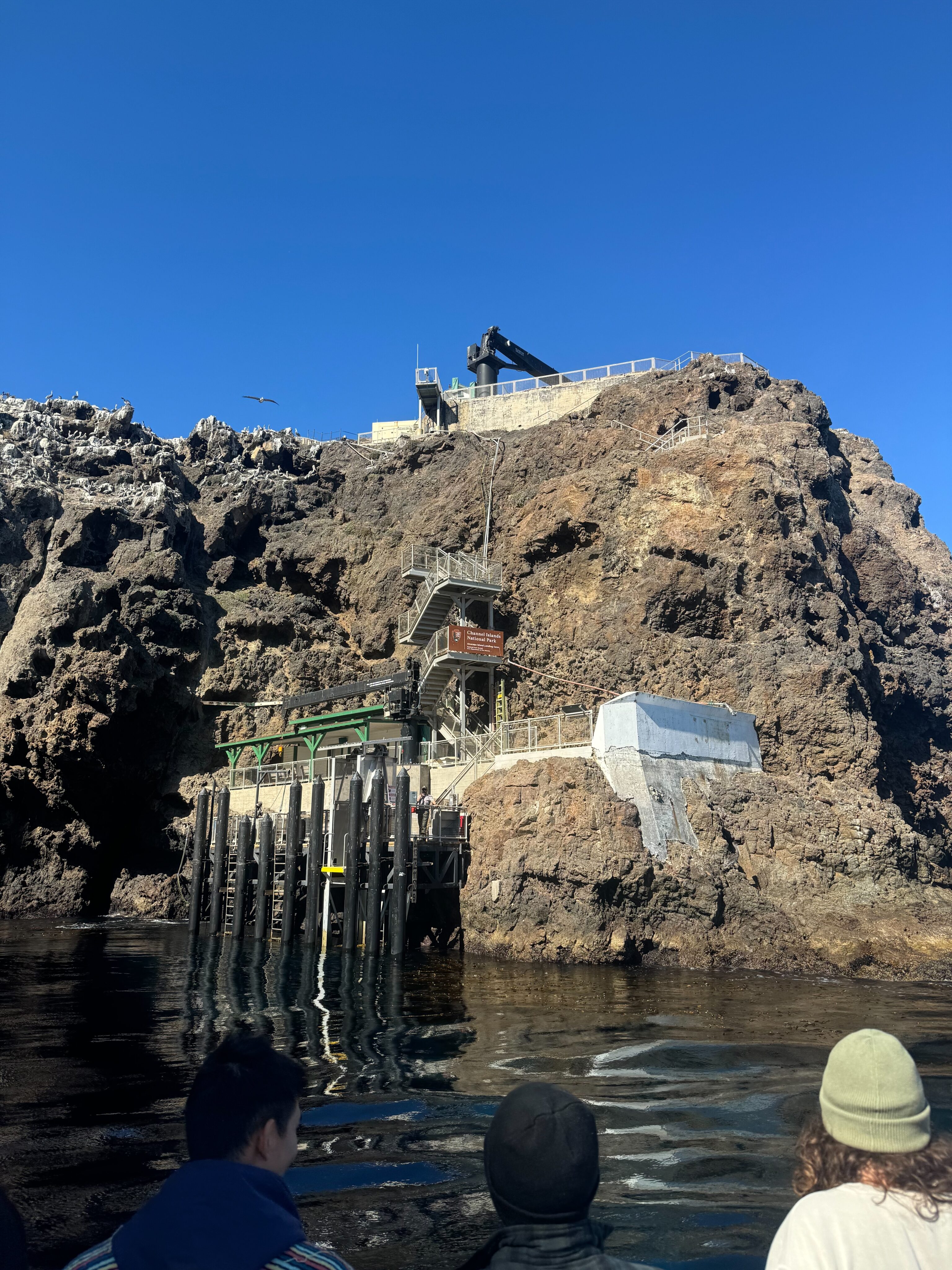


Before embarking for the island, we spent a day in Oxnard, California, preparing and relaxing. Despite its proximity to LA, the drive reminded us of the city’s notorious traffic. Oxnard itself was a pleasant stop; we grabbed some last-minute camping supplies at REI and enjoyed local cuisine.
We chose Island Packers for our transportation, the sole provider for trips to and from the islands. Their service was exemplary, making the booking process seamless given you have a camping reservation. The journey to Anacapa was filled with insightful narrations of the area’s history and wildlife, enhancing our anticipation.
Arriving at Anacapa was an adventure in itself. The dock, nestled in a tiny cove buffeted by swells, required precise navigation. The National Park has installed a really neat dock that can be adjusted up and down and once they find some middle height, you go to the end of that boat, wait for the sea to push the boat up high enough and sort of jump off.
Once ashore, we were briefed by a ranger who gave us an overview of the island and warned of some of the dangers and the remote nature of camping this far from the mainland. It is worth pointing out that the dock is near sea level and the island sits a few hundred feet up. There is a ladder and when carrying gear what feels like an endless amount of steps up.
The campground is towards the other end of the island, so you have to make the short mile ish walk over. Along the way you get to walk by all the buildings that were originally built by the coast guard. The first impression was one of both stunning beauty and a huge sigh of relief that we did not come during nesting season. There were what had to be tens of hundred of thousands of birds there with us. We set up camp on the eastern end of the island, secured our tent against the forecasted winds, and enjoyed a simple lunch with an expansive view of the ocean. Our exploration included a visit to the unmanned visitor center housing the original lighthouse lens—a piece of the island’s navigational history.
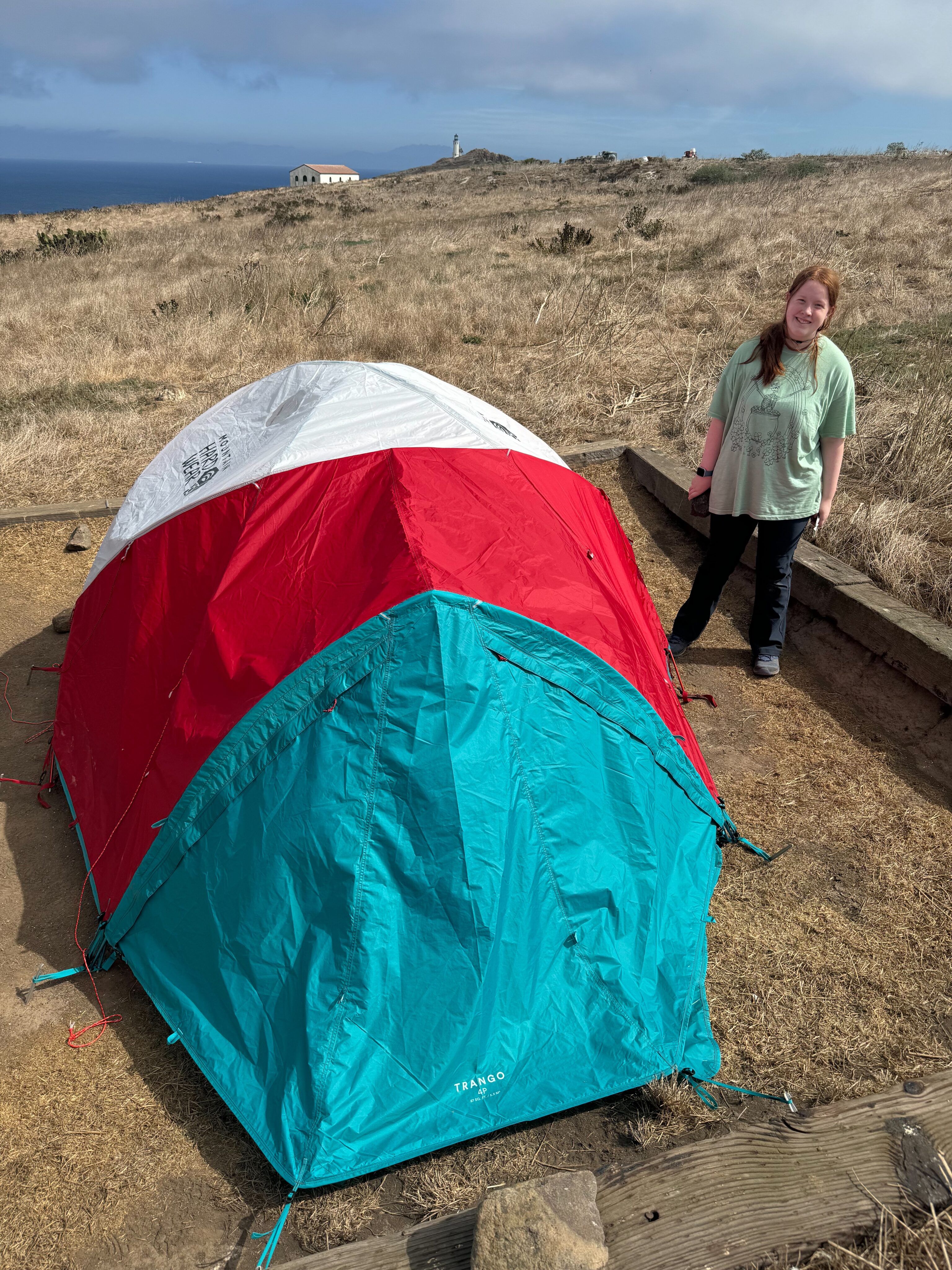
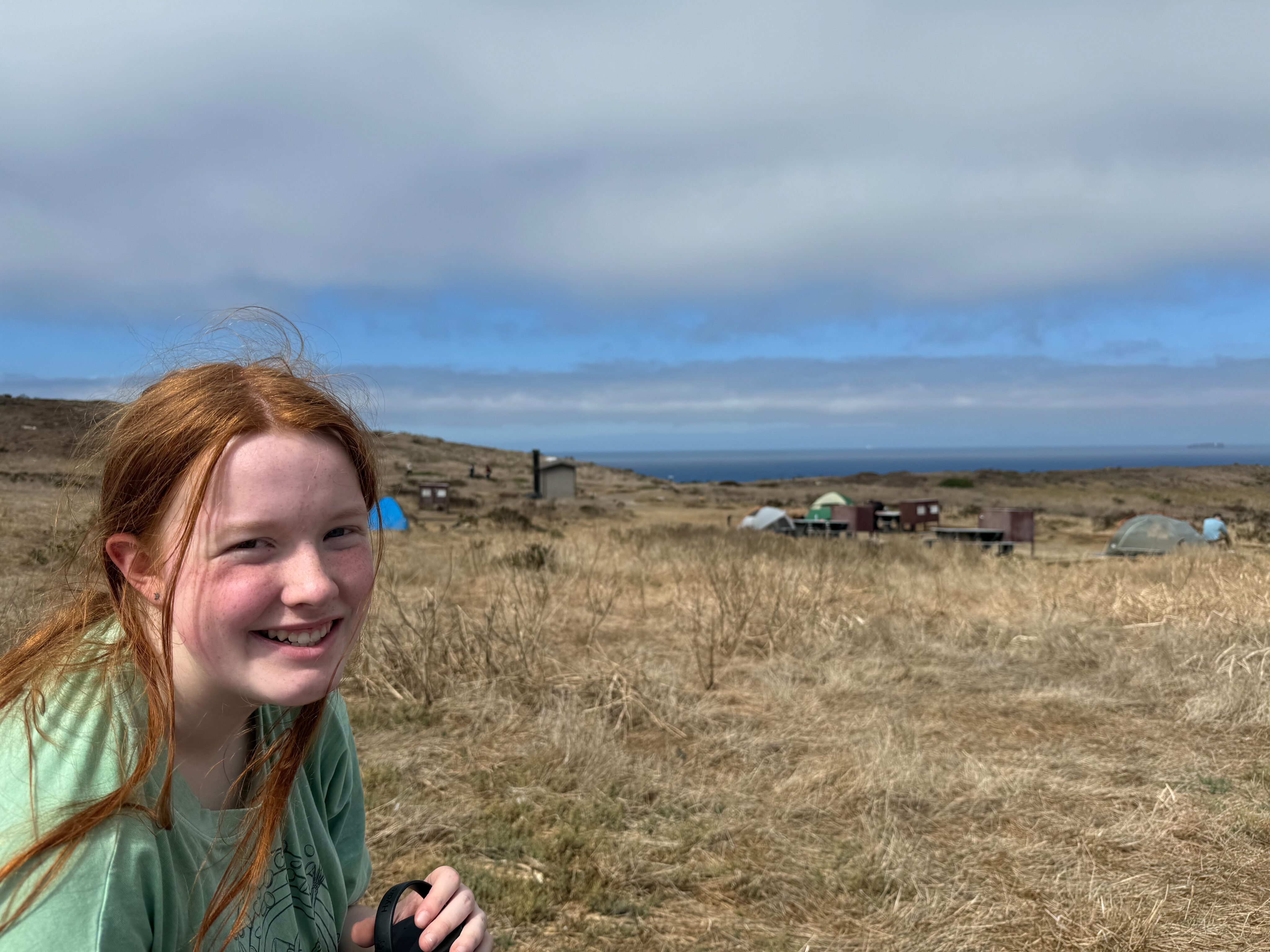
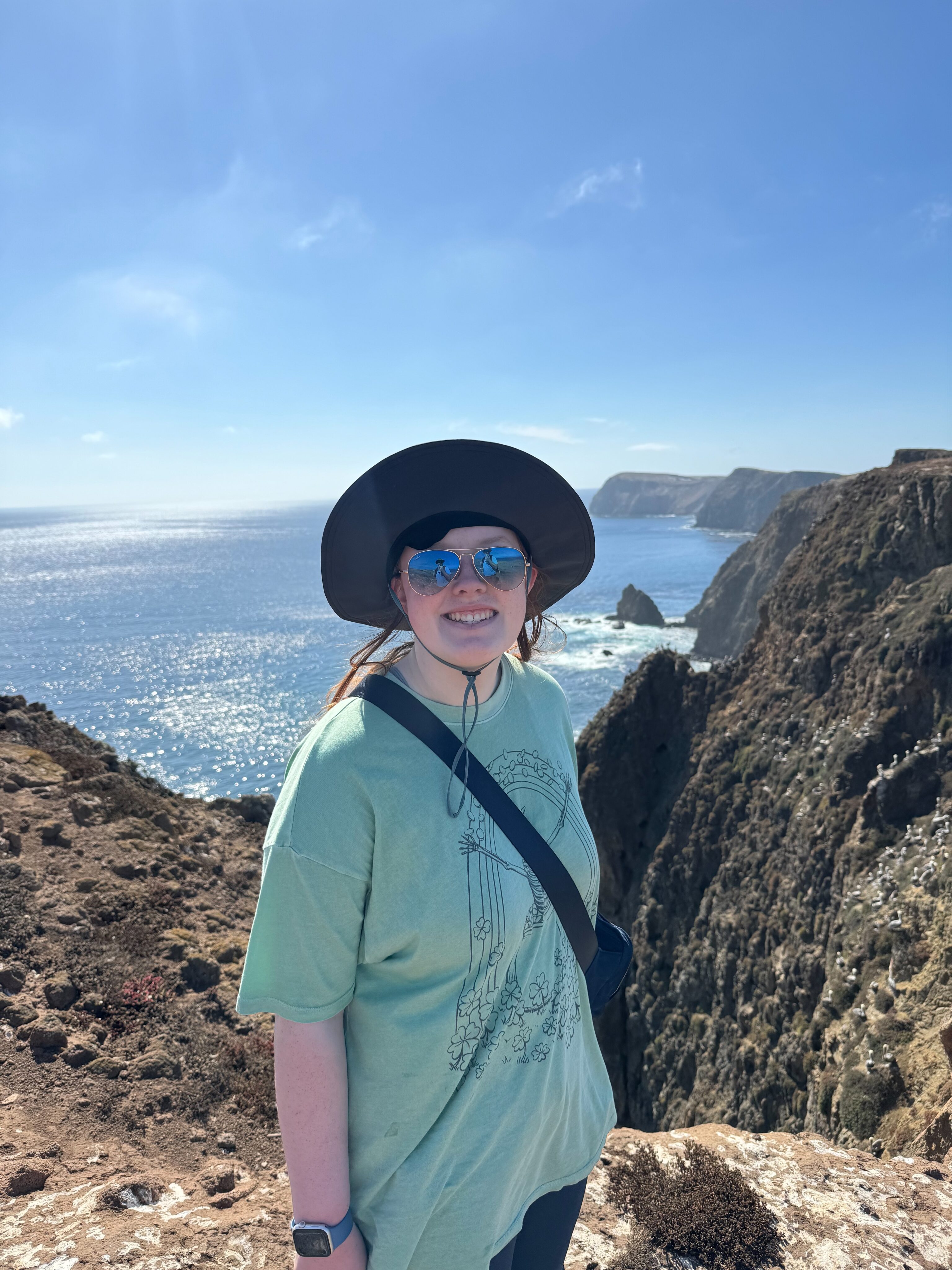

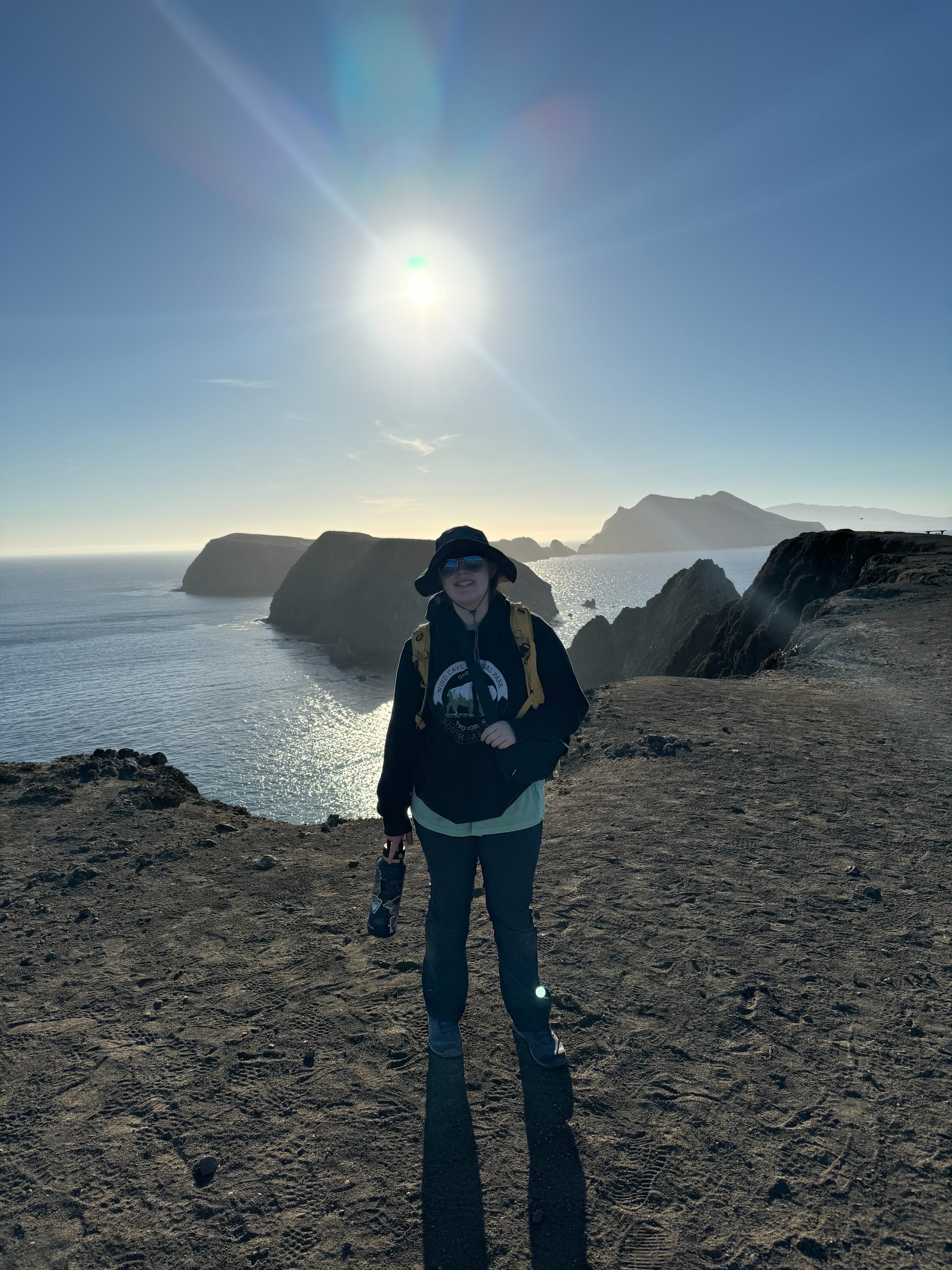
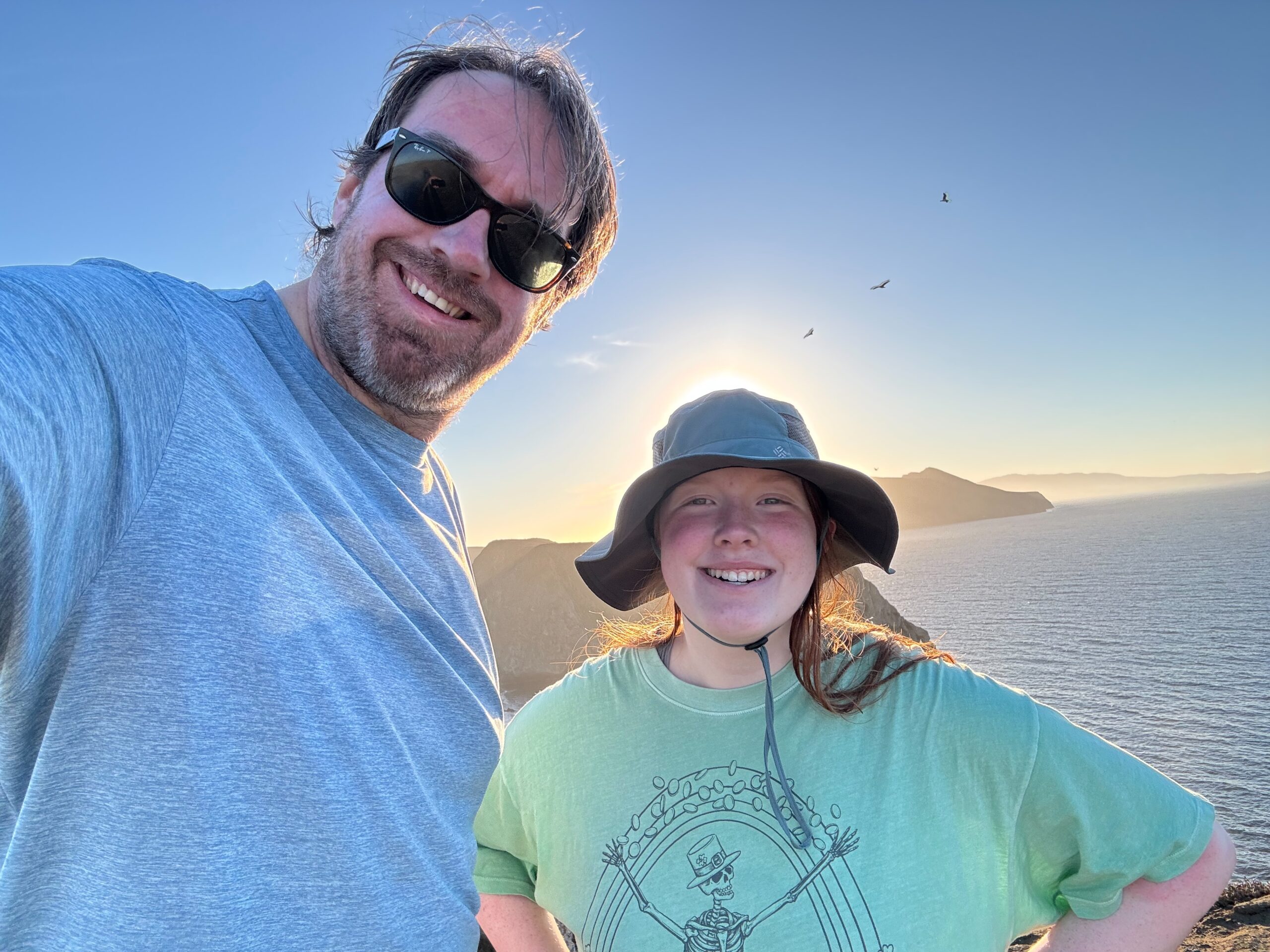
After that we made our way around the island to explore. Including stopping at the unmanned visitors center that holds the original lens for the lighthouse on the island. It was very possible to see the entire island in just an hour or two.
The real driving factor for me to camp on Anacapa was to photograph the sunset from Inspiration Point. While it’s been done to death, I figured out all the places in the channel islands I could get a photo of this was the best. We went out super early and spent some time sitting and just enjoying the area. I was able to snag a few amazing bird photos while waiting for the suent. Sadly the lack of clouds hampered my photography.
We hiked back for dinner and that’s when I made my largest error of the trip. Tired and wanting a bed, I left my Patagonia Better Sweater outside my tent on top of a duffel bag. We would find out in the morning the deer mice had made it into a lovely nest for the night. The singular warning the ranger gave us (other than to not get hurt by doing something dumb) was to avoid the mice as they carry Hantavirus.
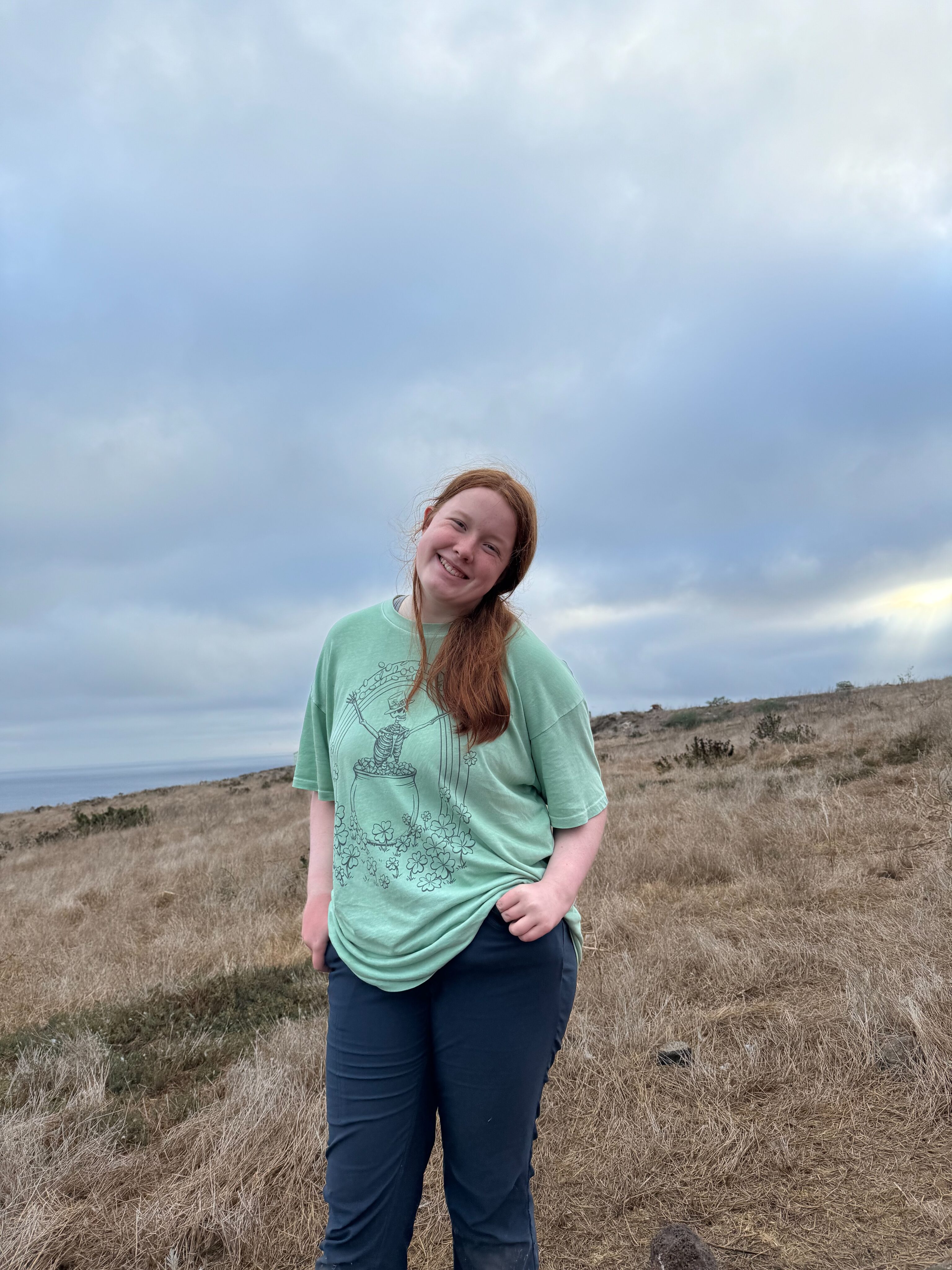


Not letting this ruin my day, we hiked out for sunrise, this time to the other side of the island so we could see the lighthouse and face to the east. The storm clouds that morning were just starting to open up and I was able to make some nice images.
After that we packed back up and headed back to the dock. The boat ride on the way home was even cooler as we spent an extra 30 min on the boat and a nice boat tour of the islands before we turned back to land. We had one more day in Oxnard before we headed back to LAX and Boston.
It was a short trip, and a long trip from Boston but well worth it to check off another park. If we ever head back I would stay on Santa Cruz island. It’s so much larger and there would be more to do.
